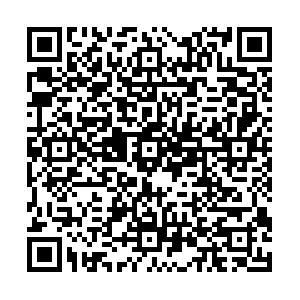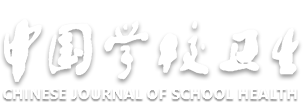Impact of preschool children's aquatic motor skill acquisition on their fundamental motor skill development
-
摘要:
目的 探究学龄前儿童水中动作技能(AMS)习得对其基本动作技能(FMS)水平的影响及相互关系,为学龄前教育和体育教学提供科学依据。 方法 2024年4—6月,采用随机抽样方法在太原市某幼儿园招募60名受试儿童,按性别分层随机分为试验组及对照组(各30名)。试验组随机分为5个班级,每个班级6人,每周2次(每次40 min),为期8周16次课,在指定的游泳中心进行水中动作技能练习干预;对照组保持常态。试验前后,通过粗大动作发展测试(TGMD-3)和实际水中技能测试量表(AAST)分别对受试儿童的FMS和AMS进行测试。FMS和AMS前后测试比较及组间比较采用t检验、Wilcoxon秩和检验和协方差分析(ANCOVA)、秩转换ANCOVA;采用Cohen's d标准化均值差异计算组间变化量差异;FMS与AMS之间的相关性采用Spearman等级相关分析。 结果 试验组学龄前儿童在接受水中动作技能练习后,移动技能(F=20.47,P < 0.01,η2=0.26)、FMS(F=4.59,P=0.04,η2=0.08)及AMS(F=109.71,P < 0.01,η2=0.79)得分均高于对照组;试验组学龄前儿童移动技能5.0(3.8,7.3)提高幅度较对照组(2.8±2.5)产生中等效应量(Cohen's d=0.71),且AMS提高量达26.0(20.8,28.0),较对照组1.0(0,2.3)产生超大效应量(Cohen's d=4.73)(P值均 < 0.01)。学龄前儿童移动技能(r=0.39)、FMS(r=0.43)与AMS的提升幅度均呈正相关(P值均<0.05)。技术动作潜入水中、踩水及矢状轴旋转完成度较低。 结论 学龄前儿童AMS习得对FMS产生积极影响,两者具有相互促进作用,尤其在移动技能方面。 Abstract:Objective To investigate the impact of preschool children's aquatic motor skill (AMS) acquisition on their fundamental motor skill (FMS) development and the correlation between AMS and FMS development, so ao to provide a scientific basis for early childhood education and physical education teaching. Methods From April to June 2024, 60 children, recruited by random sampling from a kindergarten in Taiyuan, were stratified randomly divided into an experimental group (n=30) and a control group (n=30). The experimental group were further divided into five classes of six each. They received AMS practice interventions twice weekly, 40 minutes per session, over eight weeks (16 sessions total) at a designated swimming center. The control group maintained their usual routine. Children's FMS and AMS were assessed pre- and post-intervention using the Test of Gross Motor Development-3rd (TGMD3) and Actual Aquatic Skills Test (AAST), respectively. Before and after test comparisons within and between groups employed t-tests, Wilcoxon signedrank tests, ANCOVA (including ranktransformed ANCOVA), and Cohen's d effect sizes were calculated for standardized mean differences. Spearman rank correlation was used to analyze relationships between FMS and AMS. Results After the aquatic learning, the experimental group scored significantly higher than the control group on locomotor skills (F=20.47, P < 0.01, η2=0.26), FMS (F=4.59, P=0.04, η2=0.08), and AMS (F=109.71, P < 0.01, η2=0.79). The experimental group's improvement in locomotor skills 5.0(3.8, 7.3) versus the control group (2.8±2.5) yielded a medium effect size (Cohen's d=0.71); AMS gains in the experimental group versus controls showed a very large effect size (Cohen's d=4.73) (both P < 0.01). Among preschool children, AMS acquisition was positively correlated with locomotor skills (r=0.39) and overall FMS (r=0.43)(both P < 0.05). Skill specific assessments revealed lower proficiency in headfirst entry (immersion), treading water, and sagittalplane rotation. Conclusion Preschool children's acquisition of AMS has a positive effect on their FMS, with mutual facilitation between the two, especially in locomotor abilities. -
Key words:
- Aquatic motor skill /
- Motor skills /
- Growth and development /
- Child
1) 利益冲突声明 所有作者声明无利益冲突。 -
表 1 两组被试测试前后基本动作技能与水中动作技能的比较(x±s)
Table 1. Comparisons of FMS and AMS pre- and post-test in both groups (x±s)
组别 试验前后 移动 物体控制 FMS AMSa 试验组 前测 32.7±11.9 27.3±8.6 60.1±17.1 20.5(19.8, 21.0) (n=30) 后测 38.2±9.7** 29.4±8.3** 67.6±13.4** 47.0(40.8, 48.3)** 对照组 前测 33.3±12.1 26.5±9.6 59.8±18.7 22.0(20.0, 22.0) (n=30) 后测 36.0±10.1** 29.2±8.0** 65.2±15.9** 22.5(21.0, 23.0) F值 20.47 0.26 4.59 109.71 P值 <0.01 0.61 0.04 <0.01 η2值 0.26 0.01 0.08 0.79 注:a为M(P25,P75),**与前测比较P<0.01,F与P值为组间比较。 表 2 两组被试基本动作技能水平与水中动作技能试验前后变化量差异的效应量(x±s)
Table 2. Effect sizes for between group differences in pre- and post-test changes in FMS and AMS development(x±s)
组别 人数 Δ移动 Δ物体控制 ΔFMS ΔAMSa 试验组 30 5.0(3.8, 7.3)a 2.0±3.4 7.5±5.1 26.0(20.8, 28.0) 对照组 30 2.8±2.5 2.0(1.8, 4.0)a 5.5(3.0, 7.3)a 1.0(0, 2.3) 注:a为M(P25,P75)。 表 3 试验组水中动作技能基本情况分布/%
Table 3. Distribution of AMS performance in the experimental group/%
试验前后 选项 俯卧爬行 水中行走 水中吹泡泡 水下取物 仰面漂浮 腹面漂浮 滑梯入水 蹬壁滑行 仰面打腿推进 试验前 不能完成 0 23.3 50.0 80.0 80.0 100.0 96.7 96.7 96.7 (n=30) 基本完成 50.0 36.7 46.7 20.0 20.0 0 3.3 3.3 3.3 可以完成 50.0 40.0 3.3 0 0 0 0 0 0 试验后 不能完成 0 0 0 6.7 0 0 0 6.7 3.3 (n=30) 基本完成 0 6.7 3.3 13.3 33.3 23.3 6.7 20.0 36.7 可以完成 100.0 93.3 96.7 80.0 66.7 76.7 93.3 73.3 60.0 试验前后 选项 腹面打腿推进 垂直跳入水中 潜入水中 出水 垂直踩水 纵轴转向 横轴转向 矢状轴转向 试验前 不能完成 100.0 83.3 100.0 46.7 100.0 100.0 100.0 100.0 (n=30) 基本完成 0 16.7 0 43.3 0 0 0 0 可以完成 0 0 0 10.0 0 0 0 0 试验后 不能完成 6.7 0 26.7 3.3 30.0 3.3 3.3 30.0 (n=30) 基本完成 10.0 13.3 46.7 23.3 53.3 23.3 33.3 36.7 可以完成 83.3 86.7 26.7 73.3 16.7 73.3 63.3 33.3 -
[1] ENGEL A, BRODERICK C, VAN DOORN N, et al. Effect of a fundamental motor skills intervention on fundamental motor skill and physical activity in a preschool setting: a cluster randomized controlled trial[J]. Pediatr Exerc Sci, 2022, 34(2): 57-66. [2] BOLGER L E, BOLGER LA, O'NEILL C, et al. Global levels of fundamental motor skills in children: a systematic review[J]. J Sports Sci, 2021, 39(7): 717-753. [3] MISIMI F, KAJTNA T, KAPUS J. The effect of using goggles and snorkel for aquatic skills acquisition in youth learn-to-swim programs[J]. Percept Mot Skills, 2022, 129(5): 1525-1545. [4] EKANAYAKA J, GEOK C K, MATTHEWS B, et al. Influence of a survival swimming training programme on water safety knowledge, attitudes and skills: a randomized controlled trial among young adults in Sri Lanka[J]. Int J Environ Res Public Health, 2021, 18(21): 11428. [5] PLAYTER K, HURLEY E, LAVIN-PARSONS K, et al. Water safe worcester: student-led drowning prevention in an adolescent underserved population[J]. Front Public Health, 2024, 12: 1387094. [6] D'HONDT E, BUELENS L, BARNETT L M, et al. Differences between young children's actual, self-perceived and parent-perceived aquatic skills[J]. Percept Mot Skills, 2021, 128(5): 1905-1931. [7] VAN DUIJN T, NG J L, BURNAY C, et al. The influence of equipment and environment on children and young adults learning aquatic skills[J]. Front Psychol, 2021, 12: 733489. [8] 刁玉翠, 董翠香, 李静. 大肌肉动作发展测验上海市常模的建立[J]. 中国体育科技, 2018, 54(2): 98-104.DIAO Y C, DONG C X, LI J. Establishment of the Shanghai norm for the test of gross motor development[J]. China Sport Sci Technol, 2018, 54(2): 98-104. (in Chinese) [9] MORGADO L D S, DE M K, D'HONDT E, et al. Pictorial Scale of Perceived Water Competence (PSPWC): Test Manual 1st Edition[M]. Laramie USA: Early Years SIG AIESEP, 2020: 1-26. [10] SIMÓN-PIQUERAS J Á, PRIETO-AYUSO A, GÓMEZ-MORENO E, et al. Evaluation of a program of aquatic motor games in the improvement of motor competence in children from 4 to 5 years old[J]. Children (Basel), 2022, 9(8): 1141. [11] COHEN J. Statistical power analysis for the behavioral sciences[M]. Hillsdale NJ: Lawrence Erlbaum Associates, 1988: 273-406. [12] BARDID F, HUYBEN F, LENOIR M, et al. Assessing fundamental motor skills in Belgian children aged 3-8 years highlights differences to US reference sample[J]. Acta Paediatr, 2016, 105(6): e281-290. [13] 赵延敏, 章碧玉, 常伟, 等. 3~6岁幼儿基本动作技能与体能的相关性特征研究[J]. 山东体育学院学报, 2021, 37(1): 102-111.ZHAO Y M, ZHANG B Y, CHANG W, et al. Research on the correlation characteristics of basic motor skills and physical fitness of 3-6-year-old children[J]. J Shandong Sport Univ, 2021, 37(1): 102-111. (in Chinese) [14] YANARDAG M, AKMANOGLU N, YILMAZ I. The effectiveness of video prompting on teaching aquatic play skills for children with autism[J]. Disabil Rehabil, 2013, 35(1): 47-56. [15] ROOSTAEI M, BAHARLOUEI H, AZADI H, et al. Effects of aquatic intervention on gross motor skills in children with cerebral palsy: a systematic review[J]. Phys Occup Ther Pediatr, 2017, 37(5): 496-515. [16] MACHADO M O, MARINHO D, FORTE P A L. School-based swimming lessons enhance specific skills and motor coordination in children: the comparison between two interventions[J]. Motricidade, 2021, 17(4): 367-374. [17] PRATT N A, DUNCAN M J, OXFORD S W. The effects of a 6-week swimming intervention on gross motor development in primary school children[J]. Children (Basel), 2024, 11(1): 1. [18] MARTINS V, SILVA A J, MARINHO D A, et al. Global motor development of elementary school-aged children with and without previous swimming practice in schools[J]. Motricidade, 2015, 11: 87-97. [19] MACHADO M O, MARINHO D, FORTE P, et al. School-based swi-mming lessons enhance specific skills and motor coordination in children: the comparison between two interventions[J]. Motricidade, 2021, 17(4): 367-374. [20] MA F F, LUO D M. Relationships between physical activity, fundamental motor skills, and body mass index in preschool children[J]. Front Public Health, 2023, 11: 1094168. [21] 张柳, 李红娟, 王欢, 等. 幼儿基本动作技能与身体素质的关联性[J]. 中国学校卫生, 2020, 41(4): 554-557. doi: 10.16835/j.cnki.1000-9817.2020.04.020ZHANG L, LI H J, WANG H, et al. The correlation between basic motor skills and physical fitness in young children[J]. Chin J Sch Health, 2020, 41(4): 554-557. (in Chinese) doi: 10.16835/j.cnki.1000-9817.2020.04.020 [22] MURRAY J M, ESCOLA G S. Remembrance of things practiced with fast and slow learning in cortical and subcortical pathways[J]. Nat Commun, 2020, 11(1): 6441. [23] GIANFERRARA P G, BETTS S, ANDERSON J R. Cognitive & motor skill transfer across speeds: a video game study[J]. PLoS One, 2021, 16(10): e0258242. -

 点击查看大图
点击查看大图
计量
- 文章访问数: 194
- HTML全文浏览量: 96
- PDF下载量: 17
- 被引次数: 0





 下载:
下载: